- Unbuilding Africa
- Posts
- 10 secrets on how to ACTUALLY grow a successful engineering & construction firm in Africa
10 secrets on how to ACTUALLY grow a successful engineering & construction firm in Africa
Africa's construction market is booming, projected to reach USD 239 billion by 2030 according to this report by market research firm NMSC. But only a few firms will capture the lion's share of this growth.
What's the primary difference between those who flourish and those who falter?
I’ve spent years immersed in the African construction industry.
And in this time, I have come to understand how behind the scenes, unseen market forces are always at play, shaping the industry and determining who makes it and who doesn’t.
In this sector, growth isn’t at all about having a nice website and running ads.
The real levers of power in the construction world are financial mastery, strategic partnerships, and a long-term vision for market dominance.
In this article, I share 10 critical insights (distilled from my years of experience, research and observation, and illustrated with real-world examples of successful African construction firms) that challenge common assumptions about growth in the industry.
These principles, each of which we shall discuss in detail, are as follows:
The real bottleneck isn’t projects, it’s balance sheet strength.
Joint Venture partnerships are the shortcut to bigger contracts.
Talent is the biggest growth constraint (but most firms ignore it).
Beyond contracts, the smartest firms invest in assets.
Government relations is a growth strategy.
Branding matters more than most engineers think.
Regional expansion beats local saturation.
Owning the supply chain creates unfair advantages.
Financial sophistication separates the best from the rest.
Digital transformation drives profitability.
But first, a quick note on why I’m qualified to speak on this.
For years, I have focused on the strategies that power African construction. Not just as an observer, but as someone who’s worked directly within it.
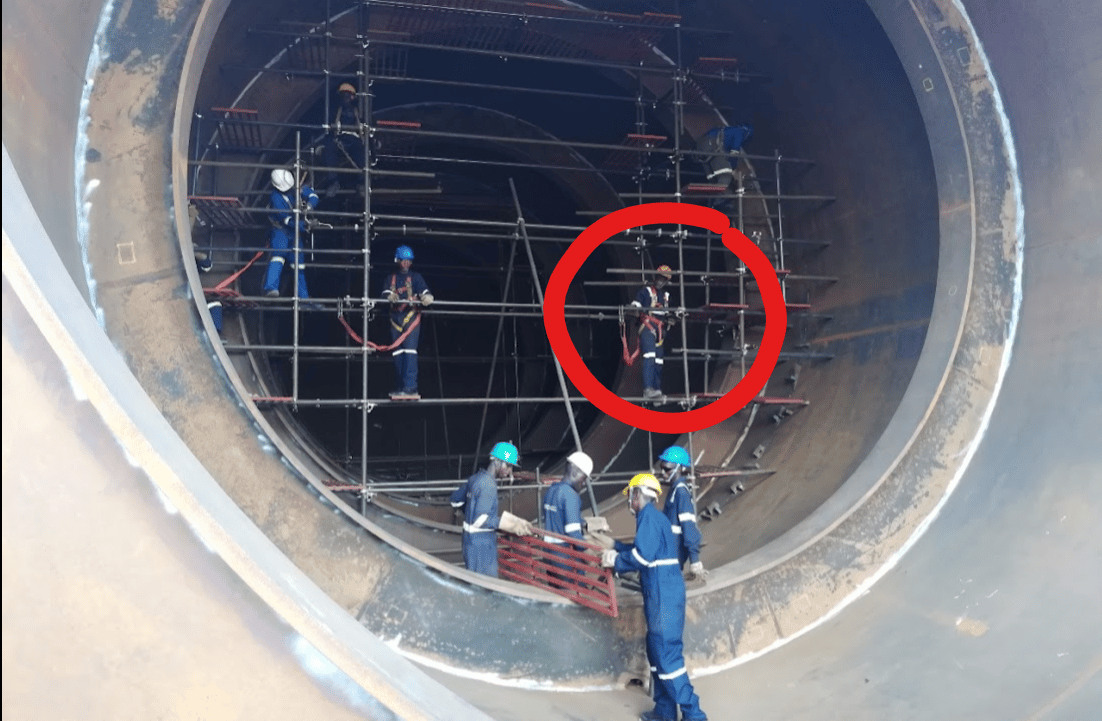
That’s me circled in red on a client site in full PPE, boots on the ground, learning what PowerPoint can’t teach.
From small businesses to industry giants, I've had a front-row seat to the triumphs and struggles of construction firms across the continent, witnessing the full spectrum; from companies struggling to make payroll to those consistently landing lucrative contracts and expanding into new markets.
This has helped me understand what moves the needle, what convinces a client to award a contract, what keeps developers up at night, and why so many firms struggle to scale despite winning big projects.
My research, spanning projects from $2 million to $400 billion mega projects, has covered all key aspects of these businesses, including:
Financials (balance sheets, financing, cash flow)
Marketing & Positioning (attracting clients, standing out)
Operations (procurement, supply chains, execution)
Teams & Talent (recruiting, training, retention)
Bidding & Contracting (winning contracts, tendering)
Expansion Strategies (new markets, joint ventures, scaling)
And through this research, one thing became crystal clear: Most construction firms believe growth is about winning bigger projects. But that’s only part of the equation.
Now, let’s get into the 10 principles that matter most:
1. THE REAL BOTTLENECK ISN’T PROJECTS, IT’S BALANCE SHEET STRENGTH
“Winning big contracts” is one thing, qualifying for them is another.
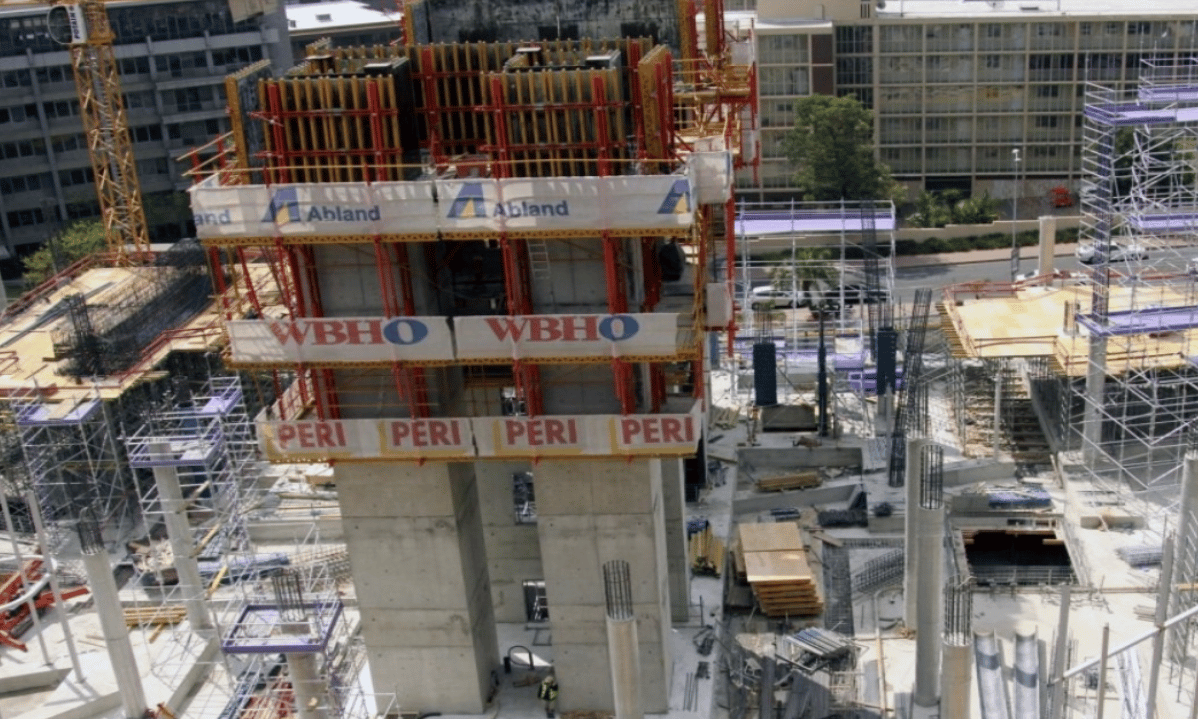
South Africa’s WBHO often leverages performance bonds to secure mega infrastructure project contracts.
Many firms chase large government or multinational contracts but lack the financial depth to secure them. Clients want to see strong financial statements, liquidity, and sureties before awarding major projects.
Scaling in this sector means mastering working capital, cash flow cycles, and project financing, not just landing deals.
As such, the biggest construction firms don’t only rely on winning tenders. They fortify their balance sheets to ensure sustainable growth and financial credibility.
A few real-world examples from both Africa and Europe include:
a) Julius Berger (Nigeria) – strong financials for government megaprojects
Julius Berger consistently secures multi-billion-dollar government projects because of its robust balance sheet and access to financing. They have won major contracts like the Abuja-Kaduna-Zaria-Kano Expressway (N232 billion) and the Second Niger Bridge (N206 billion) because they could provide the required financial guarantees and sureties. They use a mix of retained earnings, project-based financing, and strong liquidity to maintain qualification for high-value contracts.
b) WBHO (South Africa) – using performance bonds to qualify for bigger projects
WBHO, one of Africa’s top construction firms, secures major contracts by leveraging performance bonds and bank guarantees. They have won major infrastructure deals like Mozambique’s Maputo-Katembe Bridge and Gauteng Freeway Improvement Project because the company had financial credibility. They work closely with financiers to structure working capital solutions and manage cash flow efficiently.
c) ACS Group (Spain, Global) – leveraging retained earnings for stability
Though not a native African company, ACS Group is one worth mentioning. The company maintains strong financial reserves, allowing it to bid for projects like the Doha Metro in Qatar and the Sydney Metro in Australia. They use retained earnings and low debt ratios to strengthen their financial position, reducing reliance on expensive loans. Clients trust ACS because of its consistent profitability and balance sheet strength, making it a preferred contractor for high-value projects.
👉 Growth Playbook:
Strengthen your balance sheet (increase retained earnings, reduce bad debt).
Work with banks and financiers to build a revolving credit facility.
Secure performance bonds and guarantees to qualify for bigger projects
2. JOINT VENTURE PARTNERSHIPS ARE THE SHORTCUT TO BIGGER CONTRACTS
Joint ventures (JVs) are one of the fastest ways to unlock larger contracts and expand capacity.

Arup and AECOM join forces to power The Great Grid Upgrade, partnering with National Grid as design and consenting service leaders.
Many governments require local participation in major projects through local content laws, creating a natural incentive for international firms to seek local partners. But the benefits extend far beyond simply meeting regulatory requirements.
This isn’t just theory, it’s how the biggest players operate.
AECOM, a global infrastructure giant, reported $53.6B in earnings from joint ventures in 2023 alone (and similar figures in prior years). This demonstrates how deeply embedded JVs are in the business models of major engineering and construction firms.
They aren't just a "nice to have"; they are a core growth strategy.
For smaller firms, strategic JVs offer a powerful pathway to scale and competitiveness:
Expanded project capacity: Smaller firms can bid on larger projects by combining resources, expertise, and equipment with bigger partners.
Shared risk: Risks in complex projects are split among partners, reducing potential losses, especially in emerging markets.
Enhanced credibility: Partnering with established firms signals stability and capability for smaller firms bidding on major contracts.
Knowledge transfer: Smaller firms learn best practices and expertise from larger partners, accelerating growth.
Local market access: International firms gain local market knowledge, regulatory insights, and networks through local JV partners.
But successful JVs require careful partner selection, clear agreements, and a shared vision.
👉 Growth Playbook:
Identify foreign firms entering your market and offer JV deals.
Partner with specialized contractors (e.g., tunneling, bridges, renewable energy) to bid on larger projects.
Position yourself as the local expert for international firms needing market access.
3. TALENT IS THE BIGGEST GROWTH CONSTRAINT (BUT MOST FIRMS IGNORE IT)
The biggest bottleneck isn’t just money, it’s people.

In 2022, PM Group marked 10 years in India with plans to hire 150+ engineers, a clear nod to the country’s vital talent pool in overcoming global delivery challenges.
The industry has a severe skills gap, especially in high-level project management and digital tools like BIM (Building Information Modeling). The best firms don’t just hire talent; they develop it in-house to ensure long-term capability.
Take PM Group, for example.
Instead of scrambling for experienced hires, it built an internal talent pipeline so strong that it consistently ranks among the world’s top engineering and project management firms. The company invests heavily in graduate training programs, mentorship, and digital apprenticeships, ensuring its workforce is always ahead of the curve
In 2023, when they scaled rapidly within 18–24 months, they could have faced major talent shortages. Instead, they doubled down on structured skills development, digital apprenticeships and new career pathways:
Regular "temperature checks" and daily huddles kept teams aligned while sustaining employee well-being.
Mental health support and work-life balance initiatives helped retention during high-growth phases.
New roles like “model QA technician” bridged the gap between engineers and clients, improving project quality.
By aligning people, process, and technology, PM Group not only tackled the talent shortage but also positioned itself for sustained success—something many firms fail to do.
👉 Growth Playbook:
Create in-house training academies for engineers and site managers.
Partner with technical universities to build a steady talent pipeline.
Offer equity or profit-sharing to retain top executives.
4. BEYOND CONTRACTS, THE BEST FIRMS INVEST IN ASSETS
Many firms survive on government projects or private clients on a ‘Service-for-fees’ model, creating a feast-or-famine cycle.
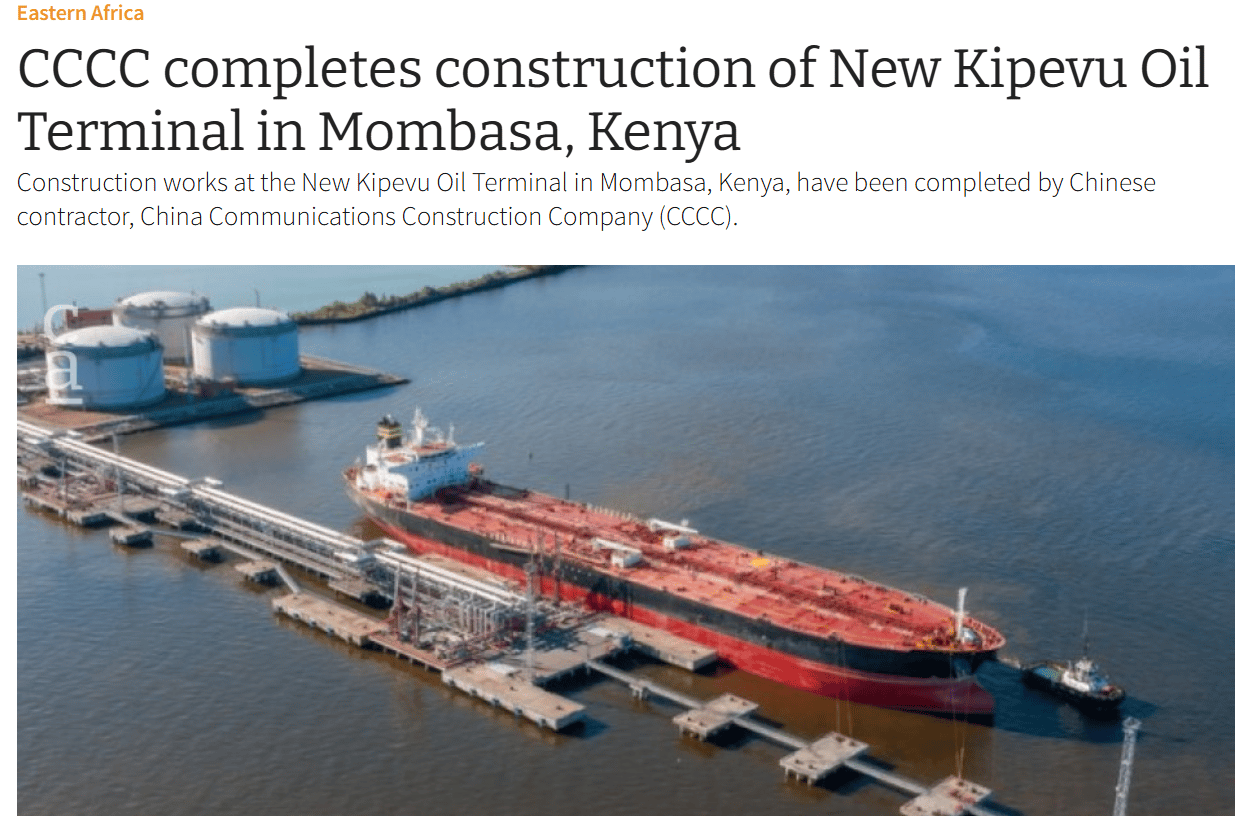
The biggest players shift from being just contractors to asset owners. They may invest in toll roads, power plants, and real estate developments that generate long-term revenue.
Here are two firms that exemplify this:
a) Intex Construction and the Kenyan Government
In 2012, Intex partnered with the Kenyan government on a PPP to upgrade the Thika Superhighway. Intex's strategy went beyond just constructing the road; they aimed for long-term involvement by securing tolling and maintenance contracts, ensuring a sustained revenue stream beyond the initial construction. This approach aligns with PPP models where private companies finance infrastructure projects and then recover their investment through tolling and service contracts.
b) China Communications Construction Company (CCCC) and the Investor-Developer model
On a larger scale, CCCC has taken this model even further.
The firm started as a traditional contractor, building roads, ports, and bridges worldwide. But instead of relying solely on project-based contracts, CCCC transitioned into an investor-developer model, securing ownership stakes in critical infrastructure.
The Kipevu Oil Terminal in Kenya wasn’t just a contract job, it became part of a broader strategy where CCCC took equity in port infrastructure, ensuring long-term returns beyond construction fees.
Through PPPs and Build-Operate-Transfer (BOT) models, CCCC has also gained partial ownership of toll roads and industrial zones, creating steady revenue streams instead of relying on new government tenders.
This shift insulates firms from economic downturns and creates a financial cushion, allowing them to benefit from recurring revenue while still leveraging their construction expertise.
👉 Growth Playbook:
Explore PPP (Public-Private Partnership) opportunities where you can own part of the infrastructure.
Move into Build-Operate-Transfer (BOT) models for sustainable cash flow.
Partner with investors and Development Finance Institutions (DFIs) to fund and co-own long-term projects.
5. GOVERNMENT RELATIONS IS A GROWTH STRATEGY
In Africa, construction is deeply tied to government policy, budgets and regulations.
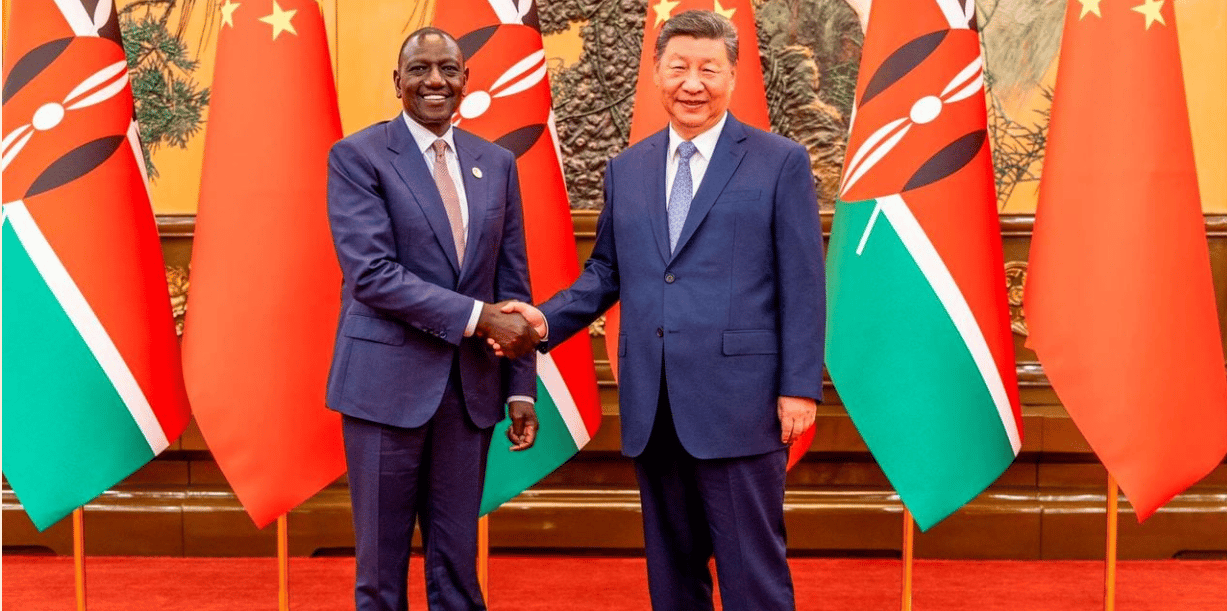
In 2024, Kenyan President Ruto awarded a mega road deal to China and snubbed French firms, a reminder that government ties shape who builds what.
Firms that proactively engage policymakers stay ahead of regulatory risks and secure early project approvals.
Two examples that stand out are:
a) Mota-Engil:
The Portuguese construction giant has secured major infrastructure deals across Africa by strategically building relationships with governments. In Malawi, the company’s proactive engagement helped it win long-term railway and road contracts, including the Nacala Corridor Railway, a critical transport link for regional trade. Rather than waiting for government tenders, Mota-Engil collaborated with policymakers early, ensuring its projects aligned with national infrastructure priorities.
b) China Road and Bridge Corporation (CRBC):
CRBC leveraged government relations to secure the Nairobi Expressway in Kenya through a Public-Private Partnership (PPP). By engaging policymakers early and aligning with Kenya’s Vision 2030 goals, CRBC avoided bureaucratic delays and structured the deal to ensure both regulatory approval and long-term profitability.
👉 Growth Playbook:
Hire ex-government advisors to navigate policies.
Join public-private infrastructure councils to influence regulations.
Use lobbying and policy research to advocate for industry-friendly laws.
6. BRANDING MATTERS MORE THAN MOST ENGINEERS THINK
Many construction firms neglect branding, thinking it’s only for consumer products. However, strong branding attracts investors, talent, and premium clients.

In 2022, AECOM did a brand refresh to reflect their current service offering as well as new tools, solutions and services that support their Environment, Sustainability and Governance (ESG) positioning, humanized the brand and aligned with their purpose of delivering a better world.
Here are two firms that have used branding as a tool to scale:
a) Orascom Construction
One of Africa’s largest engineering firms, Orascom, has cultivated a powerful brand identity centered on innovation and large-scale infrastructure projects. This strategic focus has positioned them as the preferred partner for complex projects, such as Egypt’s New Administrative Capital and the Grand Ethiopian Renaissance Dam. The company actively promotes its expertise and project progress through various channels, including media outreach, conference presentations, and detailed investor reports. This consistent communication of project milestones, sustainability initiatives, and technical capabilities reinforces their position as a thought leader within the industry.
b) Afrimat
Afrimat, a South African construction and mining firm, has established a premium brand reputation by consistently projecting an image of financial soundness and effective management. Their branding strategy goes beyond simply highlighting project wins. Afrimat prioritizes strong investor relations, regularly publishing transparent financial reports and sharing valuable market insights. This focus on open communication and financial transparency has proven highly effective in attracting institutional investors, strengthening market confidence, and creating better project funding opportunities.
👉 Growth Playbook:
Position your firm as a thought leader in sustainable infrastructure.
Develop a strong corporate identity (logos, colors, messaging).
Build a media presence showcasing innovations and impact through storytelling
7. REGIONAL EXPANSION BEATS LOCAL SATURATION
Many firms stagnate because they only focus on their home country.
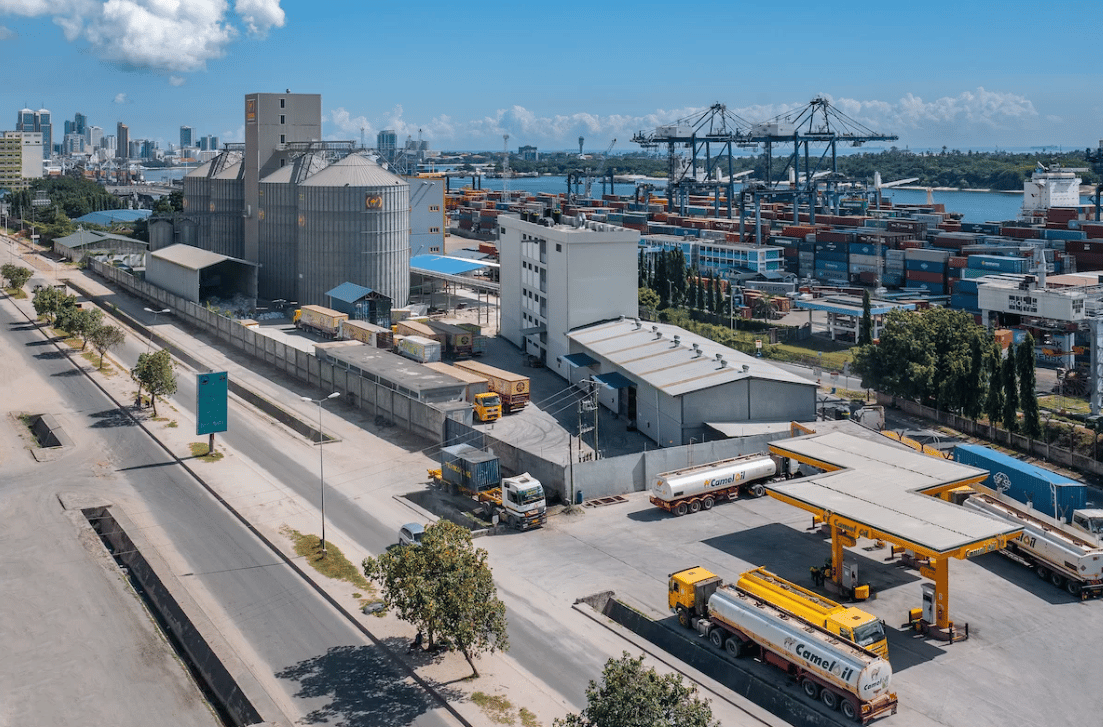
Regional players like Amsons Group (pictured above) and Devki Group, whose operations and expansion plans span multiple countries, often prefer engineering and construction firms with a regional footprint that can support their growth across borders.
However, many of the largest conglomerates, multi-nationals, investors and industrial groups in Africa don’t think in terms of countries, they think in terms of regional markets.
These companies usually need firms in construction to help them with the infrastructure needed for their market expansion plans.
A strong example is Amsons Group, which recently acquired Bamburi Cement. The company operates in the African Great Lakes Region (Burundi, DRC, Malawi, Tanzania, and Zambia) and they are rapidly expanding in industries like Cement, Oil and Gas, grain and flour, and logistics. When Amsons Group needs to build warehouses, factories, or logistics hubs, it looks for construction firms with a regional footprint to ensure consistent quality, faster execution, and lower operational risks.
A contractor that only works in Tanzania wouldn’t even make it to the shortlist.
The logic is simple: They want long-term partners, not one-off contractors. A firm that understands logistics, permits, and workforce management across multiple countries adds more value than one limited to a single market.
Infrastructure demand in Africa is growing, but the biggest opportunities aren’t evenly distributed.
Expanding across borders unlocks new markets.
👉 Growth Playbook:
Target high-infrastructure-investment countries (e.g., Ethiopia, Tanzania, Ghana).
Partner with regional banks and investment funds that finance infrastructure.
Study trade agreements like AfCFTA to operate across borders more easily.
8. OWNING THE SUPPLY CHAIN CREATES UNFAIR ADVANTAGES
Construction companies often depend on third-party suppliers, but this weakens control over costs and timelines.

EPCO Builders, one of Kenya’s largest contractors, highlights its owned assets such as heavy equipment, quarries, and batching plants in its marketing to signal strength, stability, and in-house capability.
The biggest firms vertically integrate by owning or partnering with cement factories, steel plants, or prefab manufacturing. Having in-house production reduces procurement delays, increases margins, and strengthens negotiating power.
Here are three firms that execute this exceptionally well:
a) EPCO Builders (Kenya)
EPCO Builders are a recognized Kenyan contractor who have completed high-profile projects such as the Kenya National Assembly, Moi University Pension Scheme Plaza, and Toyota showrooms. The company owns a fleet of heavy machinery, including batching plants, graders, dozers, tippers, and transport vehicles, allowing it to reduce reliance on third-party rentals and maintain control over project execution.
By investing in its own equipment, EPCO ensures efficiency, cost control, and project continuity, giving it a competitive edge in Kenya's construction industry.
b) China Communications Construction Company (CCCC)
CCCC, responsible for major projects like Kenya’s Lamu Port and Nigeria’s Lekki Deep Sea Port, often sets up its own quarries, asphalt plants, and precast yards near project sites. This reduces material transport costs, prevents supply chain disruptions, and ensures profitability.
c) China State Construction Engineering Corporation (CSCEC)
CSCEC, one of the world’s largest construction firms, owns cement plants, steel fabrication units, and prefabrication factories across different regions. For projects like the African Union HQ in Ethiopia, CSCEC leveraged its own supply chain for cement, glass, and steel, reducing procurement risks and increasing margins.
👉 Growth Playbook:
Acquire stakes in suppliers (cement, steel, aggregates).
Invest in modular construction or prefab technology to lower costs.
Explore logistics optimization (owning transport fleets for materials) to control material supply and pricing.
9. FINANCIAL SOPHISTICATION SEPARATES THE BEST FROM THE REST
Construction firms often rely too much on bank loans, leading to high debt burdens and cash flow stress.

Orascom Construction, one of Egypt’s largest firms, has scaled by leveraging advanced financial instruments to win some of Africa’s biggest contracts.
However, the smartest ones fuel growth without excessive risk using a mix of:
Corporate bonds (raising capital from institutional investors).
Mezzanine financing (hybrid debt/equity structures).
Project financing (tying debt to specific contracts instead of the company balance sheet).
Here’s how top firms do it:
a) Orascom Construction (Egypt) – Corporate Bonds & Stock Market Listings
Orascom Construction has funded large infrastructure projects through corporate bonds, stock market listings, and strategic debt placements. In 2015, the company dual-listed on the Egyptian Exchange and Nasdaq Dubai, raising capital from institutional investors. This allowed Orascom to fund major projects like the Grand Egyptian Museum and power plants across North Africa without overloading on bank debt.
b) Group Five (South Africa) – Project Financing for Large-Scale Contracts
Group Five leveraged project finance (debt tied to a specific contract instead of the whole company) for infrastructure projects across South Africa, Ghana, and Namibia. This method ensured lenders got paid from project revenues, reducing financial strain on the parent company. The company also used project finance to fund power plants, toll roads, and public-private partnerships (PPPs) across Africa.
c) Julius Berger (Nigeria) – Milestone-Based Payments to Optimize Cash Flow
Julius Berger Nigeria structures contracts to tie payments to project milestones, reducing working capital pressure. This strategy ensures cash flow stability, preventing liquidity crises common in construction. They have used it on large projects like the Second Niger Bridge and Abuja-Kaduna Expressway.
👉 Growth Playbook:
Work with investment banks to explore capital markets.
Secure long-term debt at lower rates instead of short-term loans.
Structure contracts to allow for milestone-based payments (reducing cash flow strain)
10. DIGITAL TRANSFORMATION DRIVES PROFITABILITY
The industry is still lagging behind in tech adoption, but firms that embrace digital tools gain massive efficiency advantages.

Drone technology in construction offers numerous efficiency and economic advantages for worksites, and project managers/program directors.
The biggest impacts come from:
AI-powered project management to reduce delays.
Drones for site inspections to cut monitoring costs.
Blockchain smart contracts to prevent payment disputes.
This is an area where Africa is especially lagging behind, so firms that adopt these methods are likely to gain a competitive edge that positions them way ahead of the pack.
Here’s examples of how leading global firms are using digital transformation to stay ahead:
a) Bechtel (USA, Global) – Drones for site inspections & safety monitoring
Bechtel has deployed drones on large-scale projects like oil refineries, highways, and airports to monitor site progress. This cuts inspection times by 70%, reduces labor costs, and improves safety by avoiding manual site checks in hazardous areas. In the past, they have used drone-based monitoring for high-risk construction sites in the Middle East and the US.
b) Larsen & Toubro (India, Middle East) – AI for predictive Project Management
L&T has integrated AI-powered project management tools to detect potential delays before they happen. Further, they use machine learning algorithms to analyze historical project data, identifying risks in labor productivity, weather disruptions, and supply chain bottlenecks. They have applied these AI models in smart city projects across India and infrastructure projects in the UAE.
c) China State Construction Engineering Corporation (CSCEC) – Blockchain for payment transparency
CSCEC has experimented with blockchain smart contracts to prevent payment disputes and fraud. These contracts automate milestone payments, ensuring contractors get paid instantly when work is verified. They have used this approach on mega-projects in China, Dubai, and Africa, reducing cash flow bottlenecks and improving contractor trust.
d) Royal BAM Group (Netherlands, UK) – BIM for better design coordination
Royal BAM uses Building Information Modeling (BIM) to detect design clashes before construction starts. This has reduced rework costs by 30% and improved team collaboration on projects like the London Crossrail tunnels. BIM adoption has helped BAM deliver faster and more cost-efficient public infrastructure projects in Europe and the Middle East.
e) Komatsu (Japan) – AI & IoT for automated construction sites
Komatsu’s “Smart Construction” initiative integrates AI, IoT sensors, and autonomous machinery. They use real-time data analytics to optimize excavation, grading, and material movement, reducing fuel and labor costs. They have deployed AI-driven self-operating bulldozers and dump trucks on large-scale mining and infrastructure projects in Japan, Australia, and North America.
👉 Growth Playbook:
Implement BIM for better design coordination.
Use real-time cost tracking software to avoid budget overruns.
Explore AI-driven predictive maintenance to reduce equipment downtime.
FINAL THOUGHT: THE FUTURE IS CONSOLIDATION & INSTITUTIONAL CAPITAL
Africa’s construction industry remains fragmented, with too many small and mid-sized firms. However, this is changing rapidly.
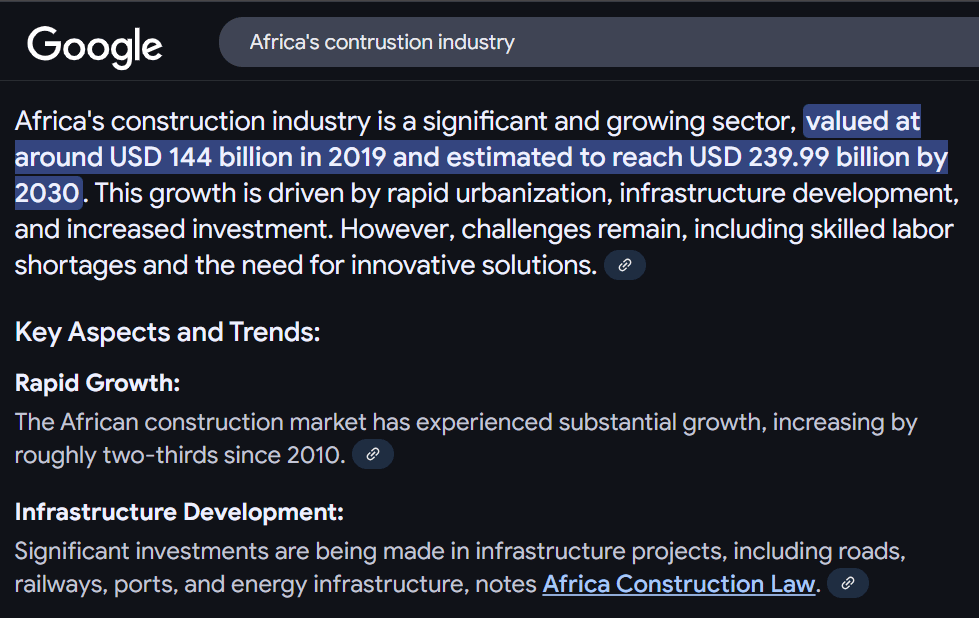
The next decade will be defined by consolidation, with mergers, acquisitions, and strategic investments from private equity reshaping the competitive landscape.
Firms that aspire to scale and achieve market dominance must evolve beyond a contractor mindset and embrace the strategic thinking of corporations.
This means strategic planning, financial sophistication, and a relentless focus on building a sustainable, scalable business.
P.S

Reply